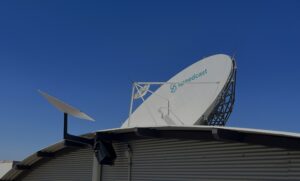From oil platforms and mining camps to ships at sea, connectivity to remote sites has long been constrained by network technology: the terminals and antennas, satellites and cell towers, narrowband and broadband circuits. Each network has its own requirements and protocols, and its own advantages and disadvantages. Getting them to inter-operate successfully has been a major challenge. Maintaining operations as the physical networks grow and change has required regular re-engineering.
“Plug and play,” so common in the core network, has been a distant ideal. But if you could get all these different networks to operate seamlessly together without people throwing switches or typing commands, what could you do with it?
Plug and Play for Remote Networks
You could keep crucial links in your remote networks from going down because they lack the intelligence to identify problems and route around them. You would save on costly manual troubleshooting and recovery while improving quality of service.
You could ensure that merchant vessels and cruise ships maintain high-quality data links even as they move between satellite beams and into and out of 4G/LTE coverage. You would count on the technology to examine the status of those networks, maximize the throughput and make the most efficient use of bandwidth, saving money and boosting productivity.
You could gain a 360-degree view of oil and gas rigs at sea and on land across multiple countries and regions from a central control center, where expert staff can spread their talents across the entire operation. You could deploy Internet of Things technology at wellheads to feed that control center and increase output while cutting production costs.
Speedcast SD-WAN
SD-WAN creates a virtualized wide area network from the capacity of all the circuits available to it. Every 10 milliseconds, it checks the physical circuits for reliability, bandwidth, latency and other quality of service factors. Circuits that don’t pass the test are labeled as unavailable for that slice of time and SD-WAN securely and automatically directs traffic to the highest quality remaining links, including failover circuits, to deliver better performance for applications and reduced costs for IT and telecom.
Speedcast is a market leader in deploying SD-WAN globally across physical networks that include fiber, teleports, satellites, 4G/LTE base stations and microwave hops. Plug and play is a lot to ask of networks that reach to the farthest corners of the world. But it’s a reality today with Speedcast SD-WAN.



























